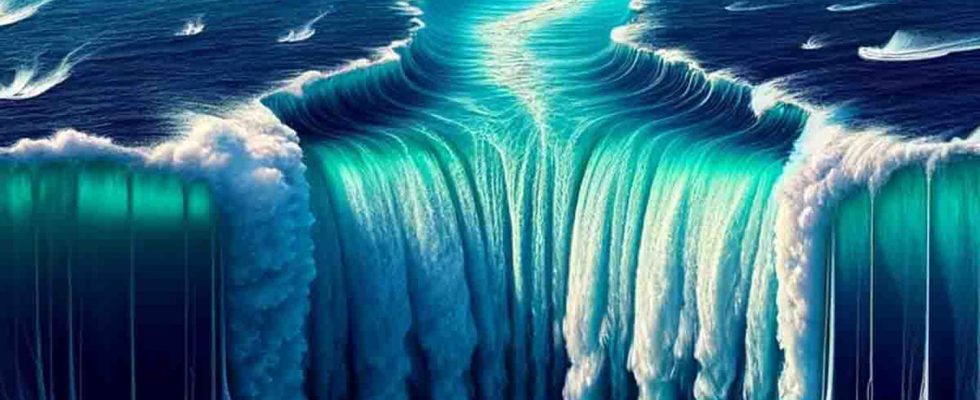The largest waterfall in the world is located in the Denmark Strait but is unfortunately threatened by climate change.
Few people know that the largest waterfall in the world is hidden beneath the ocean depths. This natural wonder, located in the Denmark Strait between Greenland and Iceland, far exceeds any waterfall on land in terms of height. Water there falls more than 3 kilometers from the Greenland Sea to the Irminger Sea, a drop in elevation that dwarfs Venezuela’s famous Angel Falls, about 1.2 kilometers high.
The particular profile of the seabed of the Denmark Strait, characterized by an abrupt passage from a depth of 500 meters to more than 3,000 meters in a relatively short distance, causes an acceleration of the bottom current. This phenomenon results in the formation of the gigantic underwater waterfall, which flows into the large trenches of the North Atlantic Ocean.
The Denmark Strait Waterfall stretches for no less than 160 kilometers and handles an incredible 5 million cubic meters of water per second, comparable to around 2,000 times the flow of Niagara at its peak. Its discovery, which took place in 1989, caused great astonishment in the scientific world. The origin of this phenomenon lies in the density of the water. Cold water from the northern seas, being denser, sinks beneath the warmer water of the Irminger Sea when the two currents meet. This descent creates an underwater waterfall of monumental proportions.
The underwater waterfall in the Denmark Strait is a natural phenomenon of rare beauty and grandeur, which surprises with its dimensions and unique mechanism. Although it is not visible on the surface, it represents a crucial element in the functioning of marine ecosystems and in maintaining the climatic balance of our planet.
Unfortunately, global warming threatens the existence of this natural spectacle. Increasing global average temperatures and the resulting change in ocean currents are reducing the volume of cold, dense water that feeds the waterfall. This phenomenon has a significant impact on marine ecosystems and the global climate.
